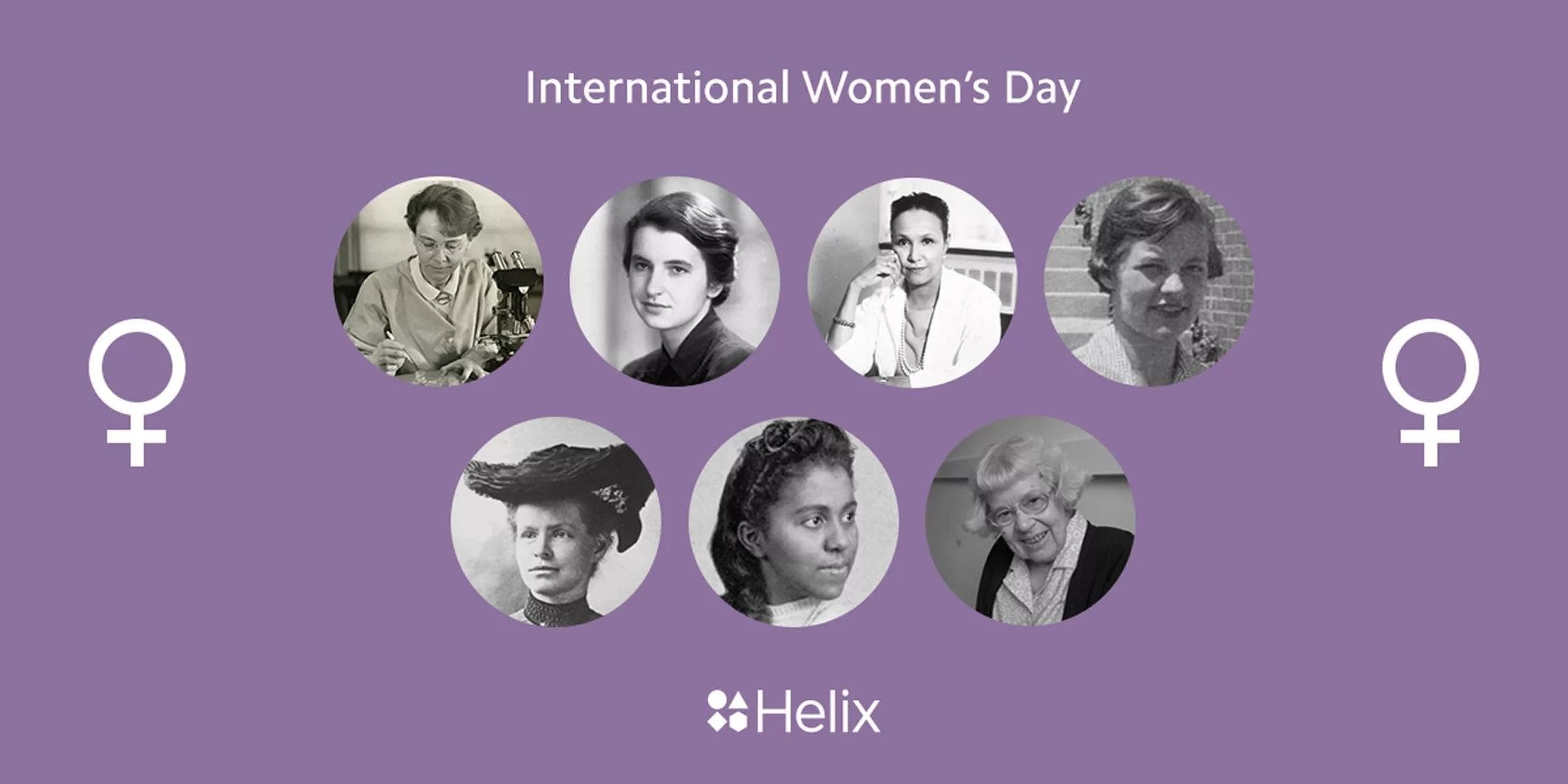Helix celebrates International Women’s Day

In honor of International Women’s Day, we’d like to highlight some of the astonishing women who have left a lasting mark on science—and on all of us. From the fight against cancer to radioactive viruses and “jumping” genes, these women have all pushed the boundaries of scientific knowledge.
Dr. Jane C. Wright
The mythological Hydra is a many headed beast who had the remarkable ability to regrow heads. It took the efforts of Hercules himself to defeat it. Though it was just a myth, the Hydra is a good analogy for cancer—a disease which is always changing and can be very difficult to beat. We’ve made great strides towards treating cancer, and that’s due in no small part to the herculean efforts of Dr. Jane C. Wright.
Dr. Rosalind Franklin
In order to see the structure of DNA, you need instruments far more powerful than ordinary microscopes. Dr. Rosalind Franklin, an expert at visualizing the molecular world, helped make it possible. Through a complex combination of mathematics, physics, and chemistry, her work has helped us to see the building blocks of life.
Dr. Marie Maynard Daly
Heart health is a big topic in modern medicine, and it’s common knowledge that too much cholesterol can be a bad thing. But where’d that knowledge come from? It took the efforts of Dr. Marie Maynard Daly, the first African American woman to receive a PhD in Chemistry, to discover this link.
[email_collection]
Dr. Martha Chase
What is the genetic material that gets passed on from parents to their children? In the 20th century’s formative years, this question prompted a roaring debate in the scientific community. In one camp was a group of scientists who believed that proteins carry the genetic information from one generation to the next, while the other camp believed it was DNA. This debate was put to rest when Dr. Martha Chase and a colleague used radioactive viruses to show that DNA carries genetic information.
Dr. Barbara McClintock
What could we possibly learn about human biology from corn? A lot, it turns out! Dr. Barbara McClintock studied the genetics of maize and found that segments of DNA aren’t always stuck in place—they can actually move around in the genome. This incredible discovery would later prove to be a key concept in human genetics and contributed to our understanding of how certain diseases develop.
Dr. Nettie Stevens
The theory of natural selection was first proposed by Charles Darwin in 1859. Just a few years later, Dr. Nettie Stevens was born. At that time, DNA and chromosomes were not well understood, and scientists still believed that a mother’s environment would determine the sex of her children. Dr. Nettie Stevens thought otherwise. She discovered that a person’s sex is determined by their chromosomes—specifically their sex chromosomes—and not the environment.
Dr. Mary Lyon
The middle part of the 20th century was an era of extraordinary growth in our understanding of genetics, and the many fascinating phenomena that help make us who we are. One of these concepts is mosaicism. Ever wonder what gives a calico cat its colorful spots? Using mice, Dr. Lyon described how individual cells selectively inactivate chromosomes, which can impact our physical features.